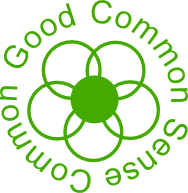March 2019 - What to eat or not to eat . . .
. . . that is the question
Published in Charlbury Chronicle March 2019
The food we eat has big implications for the planet but our food system is so obscure and complex that it is hard to get to the truth. So unless you are producing your own food, then you have to buy on trust. Labels on products often portray happy looking animals, green fields, trees, picture book farming images, but these images guarantee nothing, they are likely to just be a marketing ploy to get you to choose one product over another; beware too of labels saying things like “farm fresh” or “all natural” they mean nothing. We need to have mandatory method of production labelling on food showing the standards of welfare that the animals have experienced.
Let’s look at eggs, since 2004 producers and retailers have been legally required to stamp eggs according to the farming system in which the hens live: 3=caged hens, 2=barn eggs, 1=free range and 0=organic. Since then, customers have clearly chosen higher welfare standards for hens because the market share of UK produced cage-free eggs has increased from 31% in 2003 to over 60%. However, there is customer confusion about what the standards mean; people might be very disappointed to see what free range actually means in practice and also not realise that organic means the highest potential standard of welfare for the hens. Also, only whole eggs have to be labelled, so liquid egg and eggs used in processed food products are likely to come from the cheapest eggs available, i.e. from caged hens.
Meat doesn’t legally have to show the method of production and this makes it difficult for producers of good ethically produced meat to be able to tell the customer the full story and for people to be able to choose accordingly. Labelling beef as “Grass-fed” can mean that 49% of the diet comes from other things besides grass e.g. soya based concentrates from areas in the Amazon where the rainforest has been felled, so look for “Pasture for Life” which means their diet is 100% grass. Also, for the best animal welfare conditions, look for RSPCA Assured labels, and please do ask about where food has come from when eating out. Ready-made foods do not have to show country of production labels and chickens typically come from Thailand or Brazil.
Many friends tell me they are trying to go meat and dairy free because of methane from cattle contributing to climate change, but again the story is not as clearcut as it might seem. The recent IPCC reports are still using the conventional metric for methane which misrepresents its actual effect, they aren’t using the new metric researched by the Oxford Martin School. While methane is a more powerful greenhouse gas than carbon dioxide, it is short lived and breaks down in about 12 years whereas carbon dioxide is very long lived and continues to accumulate year on year. The new metric uses an increase of methane to be equivalent to a one-off unit of carbon dioxide and this produces graphs which better reflect the actual warming effects of both gases. The number of beef and dairy animals in the UK has declined by 25% since 1984, so rather than having contributed to warming, this has offset increases of carbon dioxide from elsewhere. So the important thing is for methane emissions not to increase. This ties in well with the IPCC advice to eat less but better meat and also reminds me of Colin Tudge’s recommendation for a global diet that will easily feed 9 billion in 2050 – “plenty of plants, not much meat, and maximum variety”.
Of course, the major impact of food on carbon emissions is the amount of food that is wasted, not just within the food production, processing, and retail stages but above all at the last stage within our own homes. This isn’t just discarding bits of food that could be edible (do you still cut off and throw out the green tops of leeks, the outer leaves of cabbages, the stalks of broccoli?) but how we respond to the date labels on food. Best Before dates are purely a recommendation for taste and texture, they are not a safety issue, so food is likely to be perfectly OK past its Best Before date, so please don’t automatically throw it out. On the other hand Use By dates are for food safety reasons so only buy enough of this sort of food that you know you can eat within date. Also develop your own nose and common sense about whether food is OK to eat, our sense of smell evolved over millions of years to keep us safe from eating dangerous food and we can detect even a few molecules of mould in the air very easily.
P.S. Have you tried banana skin curry yet? Popular in SE Asia.
Article inspired by the 10th Oxford Real Farming Conference held at the Town Hall in January 2019 (archives available online). Read further about methane emissions and climate change at https://www.oxfordmartin.ox.ac.uk/publications/view/2601
CE
Charlbury Green Hub
